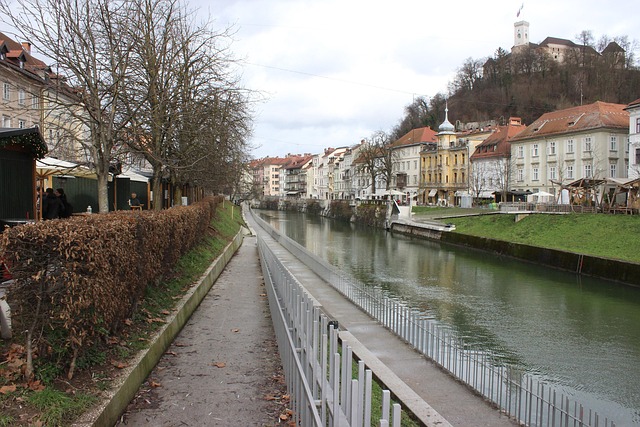Karachi's vibrant urban landscape, particularly dense areas like North Nazimabad, faces a silent challenge: noise pollution from traffic, construction, and social activities. This issue poses health risks, impacting sleep, stress levels, and hearing. To combat this, sustainable solutions are needed, including awareness campaigns, stricter noise control, and community engagement for peaceful neighborhoods, fostering a quieter, healthier Karachi.
In the bustling metropolis of Karachi, understanding noise pollution is crucial for fostering a healthier urban environment. This article delves into the specific case study of North Nazimabad, where elevated noise levels have become a significant concern for residents. We explore the sources contributing to this issue, its adverse effects on the local community’s health, and present effective mitigation strategies to create a more peaceful urban space. By examining these factors, we aim to offer insights into addressing noise pollution in Karachi.
- Understanding Noise Pollution in Karachi
- North Nazimabad: A Case Study
- Source of High Noise Levels
- Impact on Local Community's Health
- Mitigation Strategies and Solutions
Understanding Noise Pollution in Karachi

Karachi, Pakistan’s vibrant metropolis, is known for its bustling streets and lively atmosphere, but it also faces a silent challenge—noise pollution. This urban phenomenon has become a significant concern for residents and authorities alike, especially in densely populated areas like North Nazimabad. Understanding noise pollution involves recognizing its various sources, from traffic congestion to construction activities and social gatherings.
The impact of excessive noise on the well-being of Karachis cannot be overlooked. Prolonged exposure to loud noises can lead to hearing impairments, sleep disturbances, and even increased stress levels. In light of this, it’s crucial for both citizens and local governments to navigate towards sustainable solutions. By raising awareness, implementing stricter noise control measures, and promoting peaceful neighborhoods, Karachi can strive towards a quieter, more livable environment.
North Nazimabad: A Case Study

North Nazimabad, a vibrant neighborhood in Karachi, presents an intriguing case study for understanding urban noise pollution. The dense population and bustling streets contribute to a symphony of sounds that can vary greatly throughout the day. In the morning, the hum of daily routines—from traffic to local businesses opening—blends with the chirping of birds, creating a unique auditory landscape. However, as the day progresses, these harmonious notes often give way to a cacophony of noise from bustling markets and heavy traffic, highlighting the challenges of maintaining a peaceful environment in rapidly growing urban centers.
This diverse community serves as a microcosm for exploring the complex interplay between urban development and noise levels. The case of North Nazimabad underscores the need for comprehensive strategies to mitigate noise pollution in Karachi. By examining local initiatives, community engagement, and policy implications, we can gain valuable insights into creating more livable and quieter spaces within Pakistan’s most populous city.
Source of High Noise Levels

The high noise levels in North Nazimabad, Karachi, can be attributed to several sources. One major contributor is the dense urban environment, where bustling streets, heavy traffic, and nearby industrial areas all play a role in amplifying sound pollution. The constant hum of vehicles, construction activities, and factories creates a cacophony that permeates the air, affecting the quality of life for residents.
Additionally, Karachi’s vibrant yet chaotic cultural events and festivals often take place in open spaces within the neighborhood, leading to elevated noise levels during these celebrations. With a mix of local businesses, residential areas, and commercial hubs coexisting in close proximity, mitigating noise pollution has become a complex challenge that requires collaborative efforts from both the community and local authorities.
Impact on Local Community's Health

The noise levels in North Nazimabad, Karachi, have significant implications for the health and well-being of the local community. Prolonged exposure to high noise pollution can lead to various health issues, including stress, anxiety, sleep disturbances, and even cardiovascular diseases. The bustling streets and heavy traffic in this urban area contribute to a constant din that can be overwhelming for residents.
The impact extends beyond individual experiences; it affects the overall quality of life. Children growing up in such environments may face developmental challenges due to disrupted sleep patterns and increased stress levels. Additionally, the constant noise can lead to hearing impairments over time, further emphasizing the need for measures to mitigate noise pollution in Karachi’s densely populated areas.
Mitigation Strategies and Solutions

Noise pollution is a significant environmental concern in Karachi, particularly in densely populated areas like North Nazimabad. To mitigate this issue, several strategies can be implemented. One effective approach is to enhance urban planning by incorporating noise barriers such as planting trees and building sound-absorbing walls along busy roads and industrial zones. These natural and artificial barriers can significantly reduce noise levels for nearby residents.
Additionally, promoting quieter transportation options like electric buses and cycling paths can contribute to lower noise pollution. The local community can play a vital role by organizing awareness campaigns to educate people about the impact of noise on health and well-being. Encouraging the use of noise-reducing devices in industries and construction sites, along with stricter enforcement of noise control regulations, are other practical solutions that can make Karachi a quieter and more livable city.
The noise levels in North Nazimabad, Karachi, highlight the pressing issue of environmental sound pollution affecting urban communities. By identifying the sources and impacts, this case study offers valuable insights into the challenges faced by residents. Mitigation strategies, from traffic management to green space development, can significantly improve the quality of life for Karachis. Addressing noise pollution is essential for creating a healthier, more sustainable city, ensuring the well-being of its citizens.
